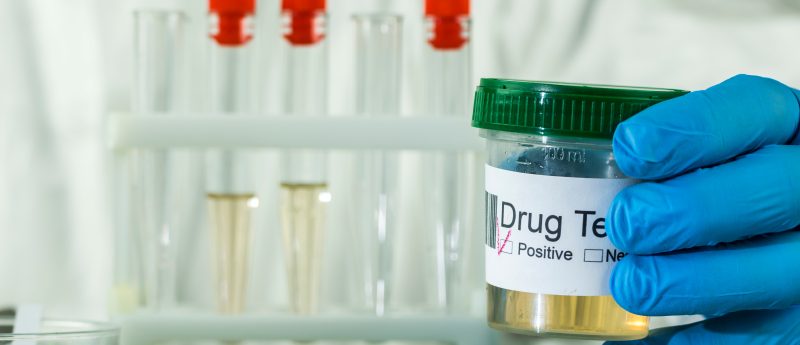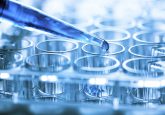Q&A With Monica Mazzarino & Franscisco Radler on key anti-doping issues

In the wake of the Olympic doping scandal, many questions were raised in regards to anti-doping – the challenges involved and the advancements in the field to prevent it. In this article we speak with experts, Francisco Radler (Director of the Brazilian Doping Control Laboratory, Rio de Janeiro, Brazil) and Monica Mazzarino (Senior Research Scientist at Laboratorio Antidoping FMSI, Rome, Italy) and discuss their opinion on these matters.
What are some of the instrumental and technological advancements employed in the fight against doping in sport?
FR: Novel weapons are the exact high resolution mass spectrometry, especially the systems employing the orbitrap mass analyzer. The characteristics of this mass analyzer together with the setups with tandem MS capabilities allows non-target analysis, excellent signal to noise ratios in target analysis as well as structural information.
MS proteomics applications tend to become common, and improvements in electrophoresis detectability through new separation media have also improved dramatically the detection capability for possible doping practices. In the verge of being applied, is the possibility to detect the yet to be practiced, genetic doping.
MM: Doping strategies and anti-doping science have progressed continuously in the range of prohibited substances and methods. The illegal synthesis of designer drugs or substances with very similar molecular structures, if not identical, to substances produced naturally, the increasing use “off label” of novel administration route/pharmacological agents, the increased use of masking/tampering strategies as well as the use of small micro-doses administered repeatedly and the development of gene therapies have revolutionized the original doping tests. Obliging the anti-doping community on one hand to update, improve and expand their existing analytical methods and on the other to include new methodologies/approaches (including multiparametric approaches) to detect the novel (e.g., peptide hormones, gene doping) and/or more problematic (e.g., micro-doses administered repeatedly) forms/strategies of doping.
In this scenario, for most of the low to medium molecular weight doping substances, ultra-high pressure chromatography coupled to high resolution mass spectrometry (i.e., time-of-flight and orbitrap) has represented in the last decade the key technological advancement. In fact, although high resolution mass spectrometry has been in use since the Summer Olympic Games in Atlanta in 1996, it has been used to detect a relative small number of specific analytes only.
The progressive advancement in terms of ionization sources, scan speed and polarity switching capability of the mass spectrometers, paralleled by similar improvements of the chromatographic techniques – in terms of chromatographic hardware, stationary phases and packing material characteristics and sizes – allowed both to set up rapid, specific and sensitive multi-targeted screening procedures, and to readily search for any new compound used by dopers.
What is more, the possibility offered by these emerging technologies of monitoring over the time the alteration of specific biomarkers/biomarker profiles has opened the way to indirect approaches ensuring in the near future to increase the detectability of the prohibited agents already included in the Prohibited List and to shed light on novel doping practices.
How can we keep up with the growing sophistication of substances and methods used by dopers?
FR: The analytical chemistry of multi-residue mixtures in complex matrices is seeing an exponential increase in recent years, which have turned the tide against the cheaters. The challenge will be for laboratories to guarantee the necessary investment to follow these technological improvements.
MM: The introduction in doping control laboratories of more and more sophisticated instrumentation – not only based on mass spectrometry coupled to both liquid and gas-chromatography – has allowed in the last decade to set up rapid, specific, robust and sensitive analytical procedures capable to efficacy detect a huge number of known and unknown low and high molecular weight compounds, including those forms of doping previously considered “invisible”. However, procedures mainly designed on the identification of the specific urinary/blood markers of exposure (substances included in the Prohibited List) alone were demonstrated to be not always so effective (e.g., window of detection) in readily detecting several doping practices (e.g., micro doping).
As a consequence, recent exciting analytical procedures were accomplished with approaches based on the detection of alteration of specific biomarkers/biomarkers profiles (e.g., athlete biological passport) and/or on the evaluation of the entire metabolic profile of urine/blood samples (e.g., retrospective analysis).
This new analytical configuration together with the increased knowledge of the pharmacokinetic profile of the prohibited substances, as well as an increased use of blood as doping control matrix and more sophisticated planning of both collection time and amount of doping control testing has allowed in the last years to increase the detectability of several banned agents (e.g., growth hormone, testosterone related compounds, erythropoietin related compounds), as well as to reveal the presence of previously unknown compounds (e.g., designer drugs) used by athletes to increase their athletic performance. It is expected to be the most promising strategy in the near future to narrow the gap between the number of athletes who dope and the number of athletes who are caught.
In the run up to the Olympics this summer, what are the key technical and strategic challenges in anti-doping and how can we overcome this?
FR: The increasing number and diversity of molecules being misused, which requires multiple approaches for their detection is a matter that requires mastering of various aspects of the analytical chemistry from very small molecules to large proteins.
The cost of testing for several complex and diverse molecules is high – to what extent will a lack of funding be a hindrance in developing a comprehensive testing program?
FR: This certainly should be in the radar of anti-doping authorities. To cope with the increased sophistication of doping practices, one has to match with increased detection technology. This means increased funding for laboratories.
MM: We have to distinguish the routine analyses from the research activities of the accredited laboratories. As already pointed out, in the last two decades, new and more advanced analytical technologies/methodologies/approaches together with more and more efficient and effective doping control tests were applied to increase the test reliability, the window of detectability and the range of substances that could be detected. This trend has imposed the increasing availability of resources, as far as infrastructure, instrumentation and human resources are concerned, with the consequent increase of the costs per sample.
Since resources are necessarily limited, there is no longer room for anti-doping tests that are not thoughtfully planned: intelligent testing may be the key to ensure that a sufficient number of tests are performed.
Concerning the research, funds (e.g., research grant) from public or private institutions are currently the primary economical resource for anti-doping laboratories to ensure that the analytical methods are continuously updated, but in the near future it is expected that additional funds will be invested to maintain the anti-doping system efficient and effective in detecting and deterring old and new forms of doping.
What do you think the biggest challenges will be in the next 5–10 years in doping analysis, and how might these be overcome?
FR: If genetic doping control is mastered as the present indications points they will be, the only resort for dopers will be to deepen their practices into the biochemistry behind the homeostasis, generating favorable unbalances for the enhancement of sports performance. A field of knowledge yet in its infancy.
In a recent paper by the Swedish doping control laboratory published in Bioanalysis – it was suggested that in order for laboratories to meet some of the analytical challenges in doping control, more income is essential. How can labs remain compliant to WADA regulations whilst allowing flexibility to generate more income?
FR: The added income should come from the sports community. The cost of the analysis should be covered by the clients. The world of sports deals with an enormous amount of money, but has not been able to recognize the effort performed by the anti-doping laboratories and the clear need for sponsorship. To avoid conflicts of interest this sponsorship must come from the payment of the analysis.
Sports drug testing involves the process of collecting a biological sample (i.e., blood, saliva or urine), which is then analyzed for chemicals that are banned or illegal in a sport. In competitive sports, certain performance-enhancing drugs are banned and in-competition testing is conducted to analyze an athlete’s biological profile.





